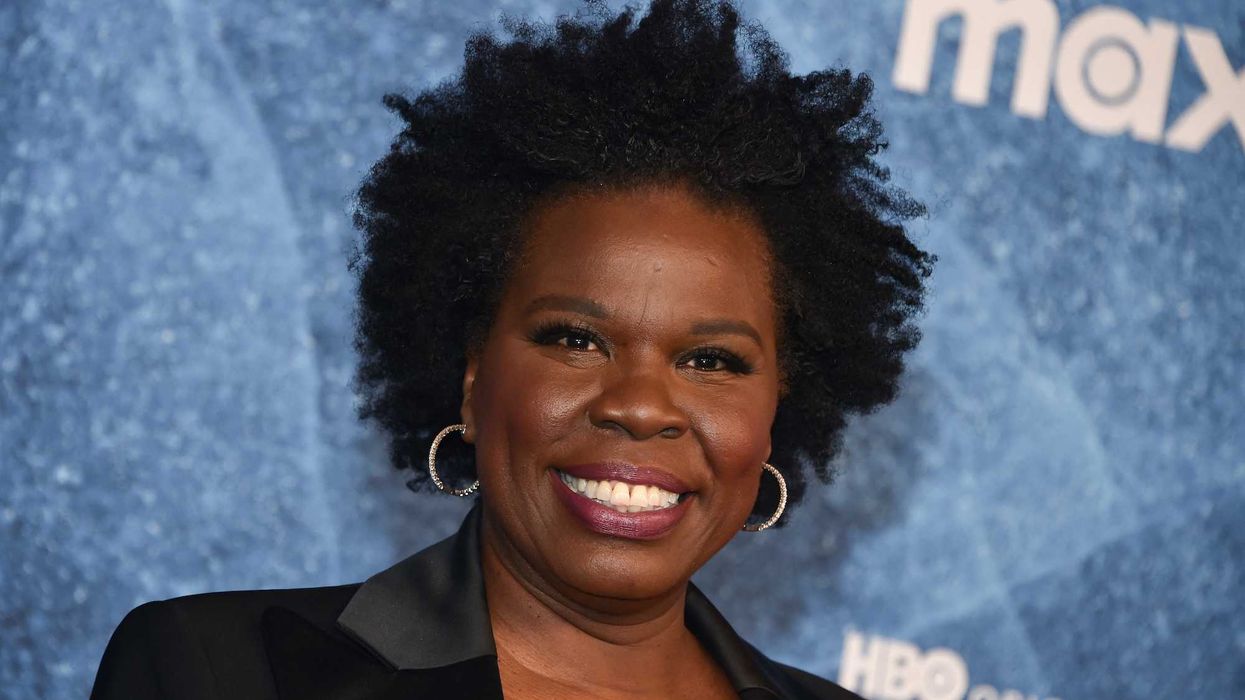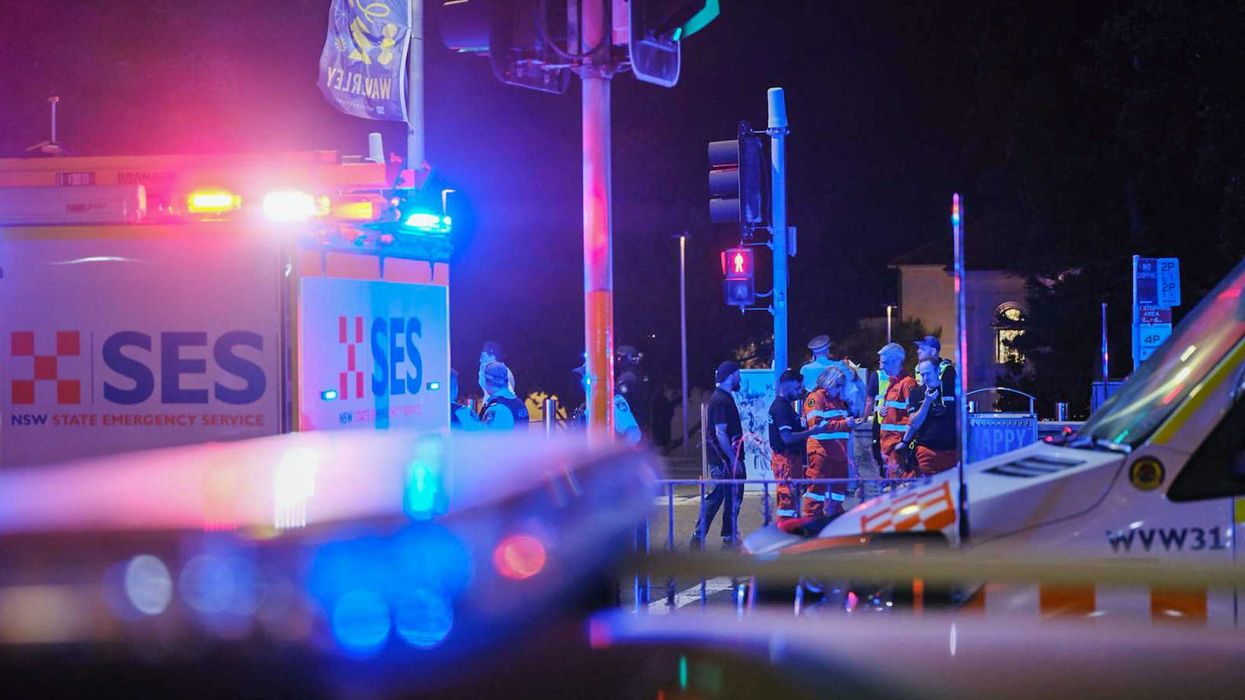
© 2025 Blaze Media LLC. All rights reserved.
The assertion that “rightwing extremists” pose the same threat as Jihadists is ludicrous and dangerous, and it is fueling a counterproductive congressional effort to the threat of ISIS-inspired terrorism in the United States.
The Daily Caller reports that in January of this year, Department of Homeland Security Secretary Jeh Johnson made the comments that rightwing extremists pose just as much a threat to America as Jihadist terrorists like the one who attacked an Orlando night club early Sunday morning or the ones responsible for the San Bernardino attack in December:
Johnson made the comments during the Homeland Security Advisory Council’s (HSAC) January meeting. City of Austin Police Chief Art Acevedo, whom Johnson appointed to HSAC, shifted the discussion to the threat of right-wing extremists, according to the official meeting minutes.
“Member Acevedo reminded the Council that the threat from right-wing extremists domestically is just as real as the threat from Islamic extremism,” the minutes state.
Johnson echoed the sentiment. “Secretary Johnson agreed and noted that CVE [Subcommittee on Combating Violent Extremism], by definition, is not solely focused on one religion,” the minutes state.
While it may be comforting for some to repeat the oft-heard bromide that America is threatened by all kinds of extremism, this simply isn’t the case, once one examines the ideology, tactics and realistic threat posed by each of the aforementioned groups.
The idea that somehow conservative extremists are just as or more dangerous seems to resurface after every major Jihadist terror attack and/or active shooter event either in the United States or abroad. The political meme stems, in large part, from reports issued by DHS in most notably in 2009 and most recently in 2015, which purport to show the threat that rightwing extremism poses to the security and sovereignty of the United States, and is constantly reiterated with undying fervor by the mainstream media
The problem with the studies go as follows.
As explained in greater detail by CR Senior Editor Michelle Malkin, the 2009 report failed to employ the typically specificity of groups, motives and tactics of “leftwing extremist” organizations and, on the subject of “right-wing” threats, only offered “a sweeping indictment of conservatives” and “assert with no evidence that an unquantified ‘resurgence in rightwing extremist recruitment and radicalizations activity’ is due to home foreclosures, job losses, and…the historical presidential election.” In short, the report merely lists a series of vague groups who might be motivated to conspire in acts of terror for vague reason, but does not articulate a specific motivating animus, a prescribed set of tactics or, most importantly, a unifying ideology outside of a loosely-defined “rightwing” branding.
The 2015 report, in contrast, is a little more specific. Despite the mainstream media hype that resulted from another DHS report supposedly on “rightwing extremism,” the actual report focused on “sovereign citizen extremists,”—which the FBI define as “anti-government extremists who believe that even though they physically reside in this country, they are separate or “sovereign” from the United States” — instead of the previous, generic “rightwing” designation. Maybe speculating that veterans would be mad enough about the new Commander-in-Chief to engage in domestic terrorism might have been a little far-fetched. However, in outlining the over 20 cases of “sovereign citizen extremist” terror in the report, DHS makes two very important admissions:
- The instances are by-and-large reactionary — not calculated — in nature. “when SCEs perceive government representatives directly infringing on their rights and freedoms in an irrevocable way — such as police serving a warrant or a judge ruling against legal filings intended to tie up court proceedings — SCEs resort to violence.”
- “Barring any significant change in SCE ideology, a major event, or a charismatic leader that advocates for more assertive violence in support of SCEs’ perceived rights” they will most likely remain reactionary and sporadic by nature.
This stands in stark opposition to the kind of calculated jihadist attacks with which the United States is now more than familiar.
The idea that “rightwing extremism” is a greater threat to safety than jihadism has also been propped up by statistics put out by the Soros-backed New America Foundation and echoed at outlets such as CNN and the New York Times. Such examples have also been repeatedly debunked.
In contrast, the jihadist threat to the United States is insidious, unified by a common ideology and, very clearly, on the offense.
A study by the Heritage Foundation published in June of last year — well before the San Bernardino or Orlando attacks — found that at the date of its publication, 69 publicly-known jihadist acts of terror had either been plotted or carried out in the United States since 9/11. The perpetrator of the 69th attack was also reported to be radicalized by ISIS propaganda, as were the attackers in both Orlando and San Bernardino. This sort of thing is completely consistent with the insurgency’s call for sympathizers and would-be jihadists outside of ISIS territory to “kill where you are” if you cannot travel to the Caliphate, as well as into ISIS’ bigger tactical playbook to “vex” and “spread savagery” to any country that does not adhere to its interpretation of Sharia law.
More than that, whether they are inspired by ISIS propaganda or are part of an Al Qaeda cell, all jihadists are united by a strategic, theological and historic school of thought reaching back almost 1000 years to the time of the Mongol Empire. If anyone of the disparate “rightwing” groups or ideologies shares the same unifying vision, I’ve yet to hear it. As horrific and tragic as such events like the shooting in Newtown, Connecticut and the Oklahoma City Bombing were, nobody can honestly claim that either attacker was driven by the same ideological motive.
Why does any of this matter? Because the differences between the two contrasting parties should point to some simple realities:
- Not all ideologies are created equal.
- Not all tactical approaches to terror are created equal.
- Not all extremists pose the same threat.
Simply put, there is no unified global ideology that will provoke so-called “rightwing extremists” them to actually kill people for a foreign cause; many of them might be sinister in nature but they don’t pose an existential threat.
Now, in the wake of Orlando, we find Congress moving forward on a slew of bills aimed at “countering violent extremism.” While the desire to do something, anything to root out one of the most insidious threats to national security and American identity since the 1919 Bolshevik Bombings is admirable, the concept of taking on "violent extremism" as a faceless specter that can infect any mindset at any time in the exact same way is grossly misguided.
Some on Capitol Hill argue that such efforts would empower the United States government to go after both jihadists AND groups like the KKK or Black Panthers. This sounds nice, doesn’t hurt anyone’s feelings and create a series of bills that President Obama can sign without offending his Muslim Brotherhood-affiliated friends all while appearing to do something. However, this dulls the knife in several ways. Due to the finite nature of resources, especially those expended by the government, such efforts would be hindered by an inherent lack of focus. Furthermore, the Obama Administration’s affinity for pulling in Muslim Brotherhood-associated groups like CAIR and the Islamic Society of Boston to assist with its previous CVE endeavors would only further hamstring any efforts at truly confronting the threat before us.
Let’s face the facts that, as disgusting as the KKK’s and the Black Panthers end games are, the realistic threat that such groups currently pose to national security is a joke in comparison to that posed by the kind of pervasive, global ideology that motivated the Orlando attacker. Threats change over time, and it makes about as much sense to further give the federal government more resources to combat groups like the KKK as it would be to re-institute the House Un-American Activities Committee a quarter century after the collapse of the Soviet Union.
Not only do such efforts typically call for Muslim Brotherhood-affiliated groups like CAIR to join the government’s efforts to “counter violent extremism,” but the language of these bills sterilizes the Jihadist nature of the existential threat at and thereby repeats the Obama Administration-approved bromide that all ideological threats are essentially the same.
The existential threat that we face isn’t “violent extremism,” but global jihadism. As Dr. Sebastian Gorka, Major General Matthew C. Horner Distinguished Chair of Military Theory at Marine Corps University, puts it, “we didn’t call the Soviets misguided Democrats” and nor should we call this threat anything other than its rightful name
Motive is important. Ideology is important. And how these two manifest into tactics is also important. The idea that “rightwing extremism” (whatever that means in any given report) is just as much a threat as jihadism is not only laughable; it’s dangerous.
Want to leave a tip?
We answer to you. Help keep our content free of advertisers and big tech censorship by leaving a tip today.
Want to join the conversation?
Already a subscriber?
more stories
Sign up for the Blaze newsletter
By signing up, you agree to our Privacy Policy and Terms of Use, and agree to receive content that may sometimes include advertisements. You may opt out at any time.
Related Content
© 2025 Blaze Media LLC. All rights reserved.
Get the stories that matter most delivered directly to your inbox.
By signing up, you agree to our Privacy Policy and Terms of Use, and agree to receive content that may sometimes include advertisements. You may opt out at any time.






